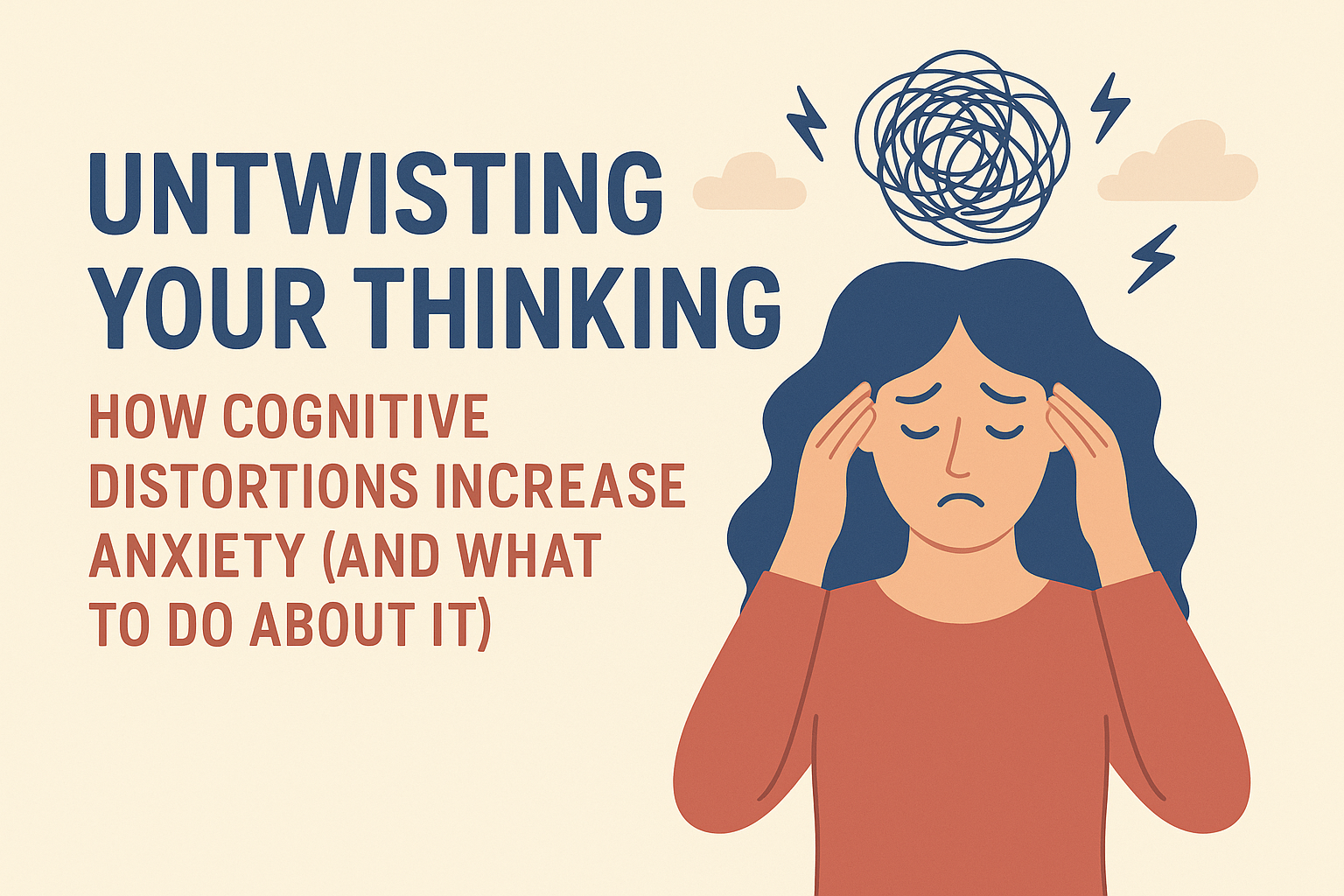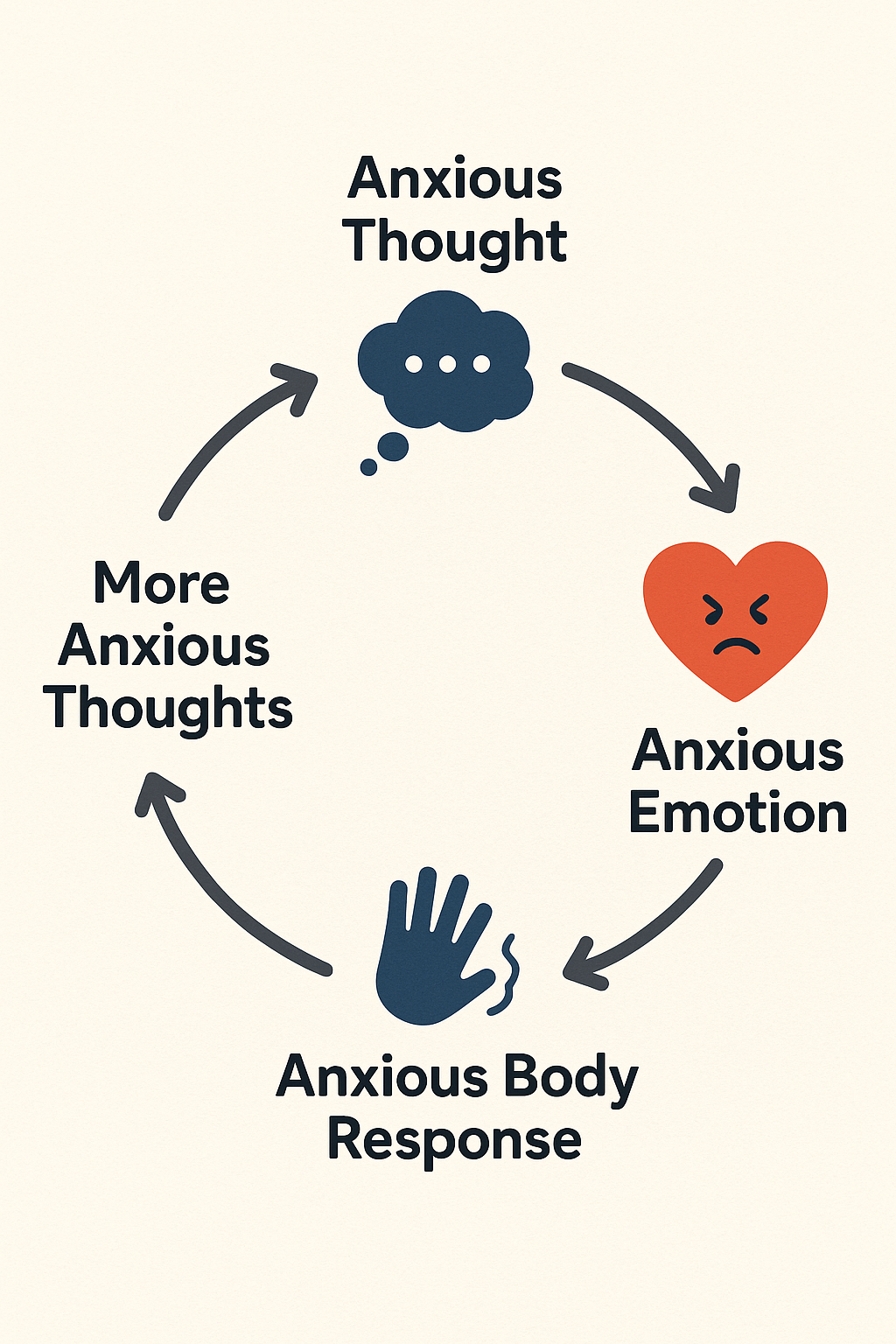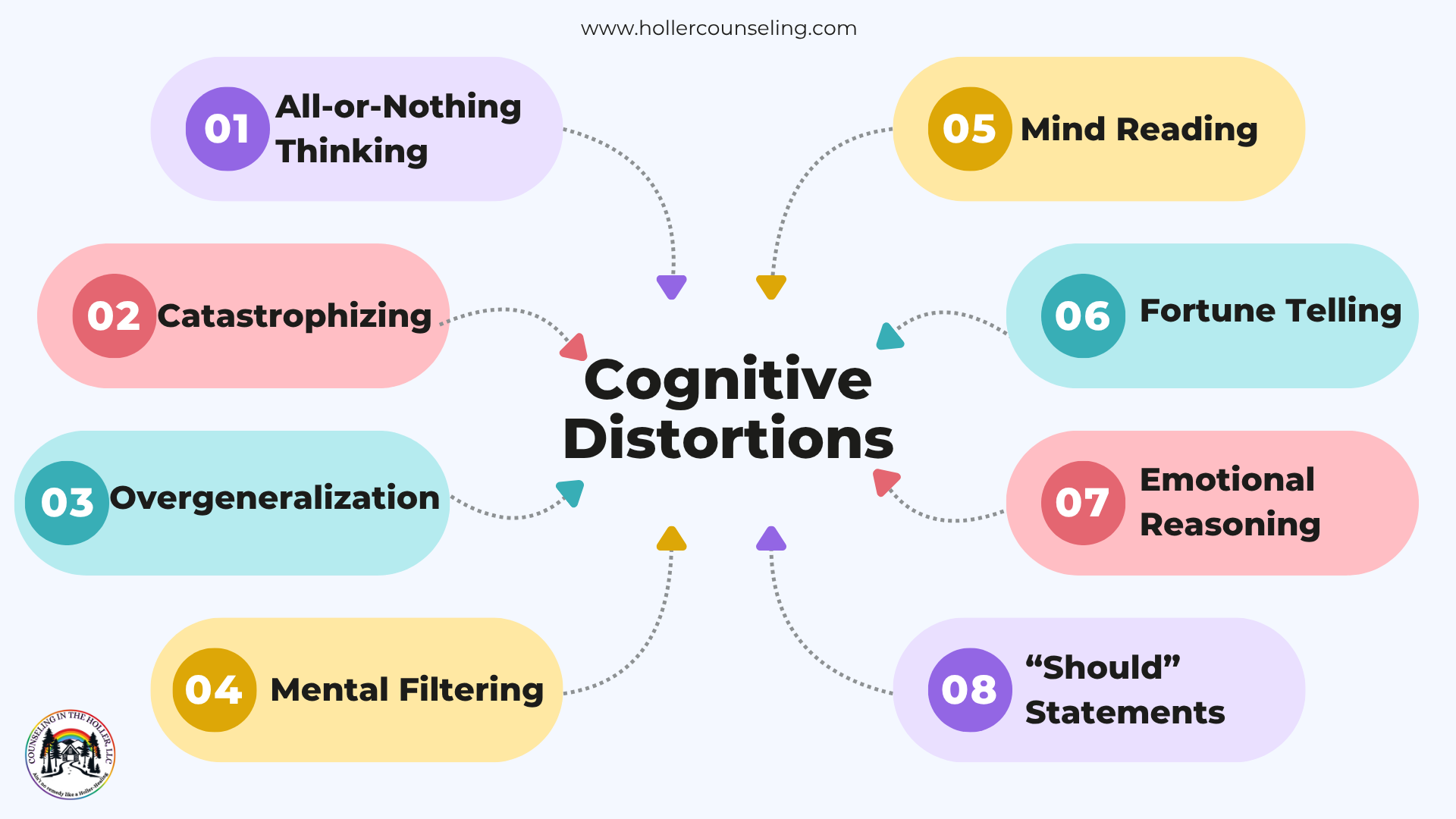Untwisting Your Thinking: How Cognitive Distortions Increase Anxiety (And What to Do About It)
“Don’t believe everything you think.”
Cognitive distortions, those sneaky, automatic thought traps, can quietly fuel our anxiety without us even realizing it. In this week’s blog, I break down what cognitive distortions are, how they impact our mental health, and how you can begin to challenge them through tools like thought journaling and cognitive restructuring. Whether you’re brand-new to therapy or just looking for clarity, this post offers practical steps to help you take your thoughts off autopilot.
The Lies Our Brain Tells Us
Have you ever caught yourself spiraling into worst-case scenarios? Or feeling like one small mistake means you’re a total failure? If so, you’re not alone, and you’re not broken.
These experiences are likely signs of cognitive distortions: habitual, automatic ways of thinking that distort reality and fuel anxiety, shame, and low self-worth.
This blog is for anyone who’s ever felt trapped in their own head. We’ll explore:
What cognitive distortions are
Why they increase anxiety
How to spot them
How to challenge and replace them
A step-by-step guide you can start using today
What Are Cognitive Distortions?
Cognitive distortions are habitual thought patterns that warp your perception of reality in negative or irrational ways. They often develop from:
Childhood environments (especially trauma or invalidation)
Societal messaging and expectations
Unprocessed emotional experiences
Survival strategies that became overgeneralized
They’re like “mental shortcuts” your brain uses, but sometimes those shortcuts are full of potholes.
Dr. Aaron Beck, the founder of Cognitive Behavioral Therapy (CBT), and later Dr. David Burns, identified these patterns as key players in anxiety, depression, and stress-related disorders.
How Cognitive Distortions Worsen Anxiety
Cognitive distortions keep the body and mind in a state of hyperarousal. Here’s what happens when we believe distorted thoughts:
The brain perceives threat, activating the amygdala (your alarm system)
The body releases stress hormones like cortisol and adrenaline
Your mind begins scanning for more danger (aka hypervigilance)
Your thoughts reinforce the emotion—and the emotion reinforces the thought
This creates a loop:
Over time, this cycle increases your sensitivity to stress and limits your confidence in handling daily life.
Common Types of Cognitive Distortions (With Examples)
How to Identify Your Distortions
Before you can change a pattern, you need to spot it. Many people go through life believing their thoughts without ever questioning them. That’s where thought awareness comes in.
Step 1: Learn to Observe Your Thoughts
Start noticing:
What runs through your mind when you’re anxious?
Are there common phrases or fears that pop up?
Do you hear an inner critic's voice? What does it say?
Step 2: Use a Thought Log
Here’s a simple Thought Record Template:
Step-by-Step Practice: Cognitive Restructuring in Action
Here’s how to apply cognitive restructuring in real time:
Step 1: Catch the Distortion
Ask yourself: “What am I thinking right now?”
Use the distortion list to name it. Naming it helps reduce its power.
Step 2: Gather Evidence
Ask:
“What facts support this thought?”
“What facts contradict it?”
“Am I jumping to conclusions?”
Step 3: Get an Outside Perspective
Try:
“What would I say to a friend in this situation?”
“Would I talk to someone else the way I’m talking to myself?”
Step 4: Reframe the Thought
Use what you’ve gathered to create a new, balanced statement.
Not overly positive—but more realistic and compassionate.
Step 5: Reflect on How You Feel Now
Rate your anxiety before and after the reframe (0–10 scale).
Most people notice at least a slight reduction after untwisting a distortion.
Optional Daily Practice Prompt:
Each evening, write:
One anxious or critical thought you had today
The distortion behind it
A new, balanced thought
How it felt to challenge it
Final Thoughts: You Can Rewire This
Cognitive distortions aren’t signs of weakness. They’re habits—habits your brain picked up over time to try and make sense of things. But you can teach your brain a new way.
Every time you challenge a distortion, you build a little more resilience. You soften the inner critic. You reclaim your calm.
Want Support?
If this blog resonated with you, Counseling in the Holler, LLC is here to walk alongside you. I offer trauma-informed therapy rooted in mindfulness, DBT, and self-compassion. I also accept many major commercial insurances, KY medicare, and I am now accepting KY Medicaid- Passport, United Healthcare, and Wellcare.
“Ain’t no healing like a Holler-Healing.”
References:Beck, J. S. (2011). Cognitive behavior therapy: Basics and beyond (2nd ed.). Guilford Press.
Burns, D. D. (1999). The feeling good handbook. Plume.
Leahy, R. L. (2017). The worry cure: Seven steps to stop worry from stopping you. Harmony.
Clark, D. A., & Beck, A. T. (2012). The anxiety and worry workbook: The cognitive behavioral solution. Guilford Press.
American Psychological Association. (2017). Clinical practice guideline for the treatment of depression. https://www.apa.org/depression-guideline





